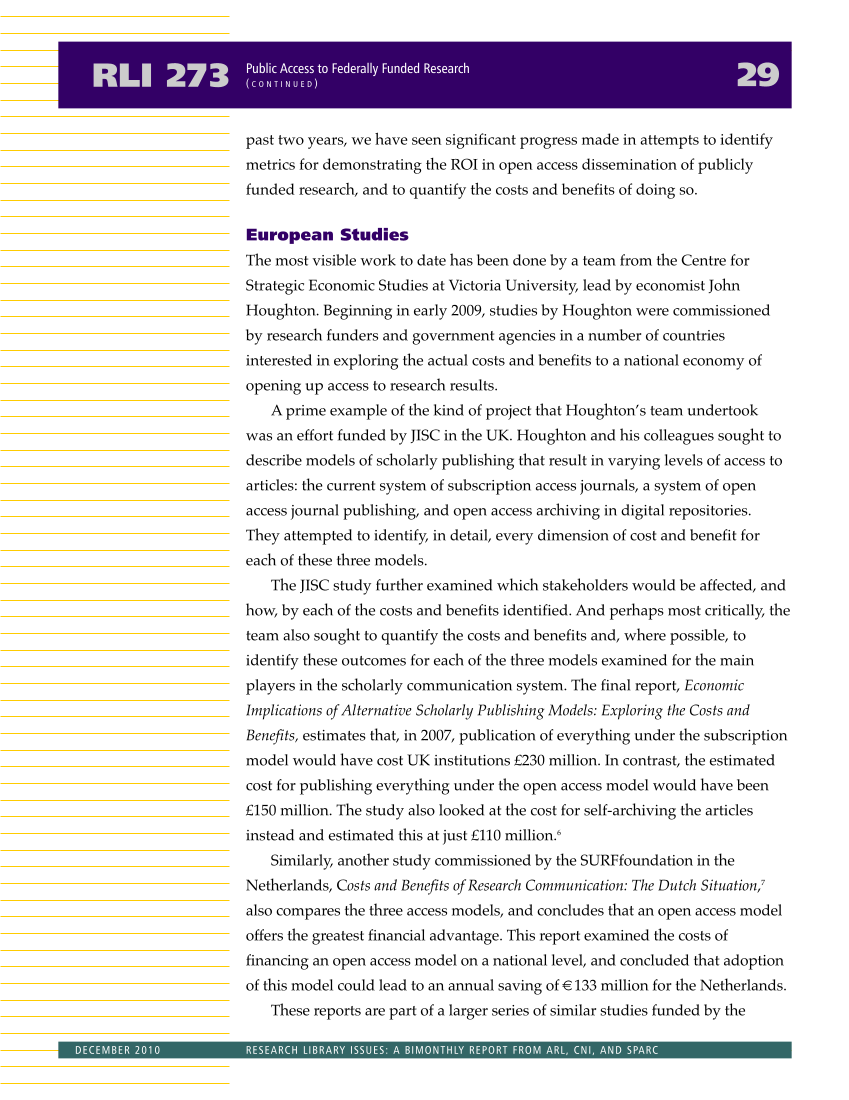past two years, we have seen significant progress made in attempts to identify metrics for demonstrating the ROI in open access dissemination of publicly funded research, and to quantify the costs and benefits of doing so. European Studies The most visible work to date has been done by a team from the Centre for Strategic Economic Studies at Victoria University, lead by economist John Houghton. Beginning in early 2009, studies by Houghton were commissioned by research funders and government agencies in a number of countries interested in exploring the actual costs and benefits to a national economy of opening up access to research results. A prime example of the kind of project that Houghton’s team undertook was an effort funded by JISC in the UK. Houghton and his colleagues sought to describe models of scholarly publishing that result in varying levels of access to articles: the current system of subscription access journals, a system of open access journal publishing, and open access archiving in digital repositories. They attempted to identify, in detail, every dimension of cost and benefit for each of these three models. The JISC study further examined which stakeholders would be affected, and how, by each of the costs and benefits identified. And perhaps most critically, the team also sought to quantify the costs and benefits and, where possible, to identify these outcomes for each of the three models examined for the main players in the scholarly communication system. The final report, Economic Implications of Alternative Scholarly Publishing Models: Exploring the Costs and Benefits, estimates that, in 2007, publication of everything under the subscription model would have cost UK institutions £230 million. In contrast, the estimated cost for publishing everything under the open access model would have been £150 million. The study also looked at the cost for self-archiving the articles instead and estimated this at just £110 million.6 Similarly, another study commissioned by the SURFfoundation in the Netherlands, Costs and Benefits of Research Communication: The Dutch Situation,7 also compares the three access models, and concludes that an open access model offers the greatest financial advantage. This report examined the costs of financing an open access model on a national level, and concluded that adoption of this model could lead to an annual saving of €133 million for the Netherlands. These reports are part of a larger series of similar studies funded by the RLI 273 29 Public Access to Federally Funded Research ( C O N T I N U E D ) DECEMBER 2010 RESEARCH LIBRARY ISSUES: A BIMONTHLY REPORT FROM ARL, CNI, AND SPARC







































